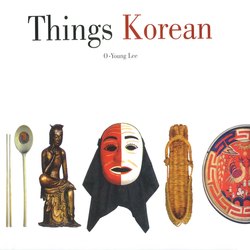Читать книгу Things Korean - O-Young Lee - Страница 25
На сайте Литреса книга снята с продажи.
ОглавлениеLetter of Unity and Continuity
Ryul
Any Korean dictionary has one section reserved mainly for foreign words, mostly English loan words. Here reside such words as radio, ring and many more of the words we have borrowed from foreign languages. This section is more foreign territory than Korean because so few Korean words begin with (which, in an initial position, sounds something like a flapped r). If a Korean word did originally begin with a , it has long since been assigned to the section for (an approximation of n), because phonetic laws in Korean make the come out a lot easier in this case than the .
The sound would almost seem to be determined by the form of its symbol. The letter is more than a simple representation, a shadow, of its sound; rather, it has a strong independent sovereignty of its own. The , with its perfect symmetry, is in fact the most interesting of all the Korean letters.
Korean letters are defined as phonetic symbols. Upon closer observation, though, it can be seen that the Korean system is not just a phonetic alphabet, like that of English. Both systems are phonetic, but there is a difference in that the Korean symbols were not formed arbitrarily, as those in the English system were. Take the English k for example. Is there any more than an arbitrary relationship between the letter's form and its sound?
Now take the , Korean's closest equivalent to the English k. Its form indicates the manner in which its sound is produced. To make this sound, the back of the tongue knocks up against the back roof of the mouth (a little further back than in production of the English k). The vertical line of the is the part of the tongue which reaches from its root up to the mouth's roof, and the horizontal line is the horizontal front half of the tongue. This resemblance between the symbol and the formation of its sound is a distinctive feature of all the letters in the Korean alphabet.
We can see this even more clearly in the , the second letter in the Korean phonetic system. The formation of the sound of the requires that the tip of the tongue touch the upper inside of the upper teeth, with the base of the tongue in a lower position. This is just the reverse of the production of the sound for the
A discussion of these two letters returns us to the. This symbol, when it is preceded and followed by a vowel, is a combination of the and the and one more, the (somewhere between the English t and d), in both its design and in the formation of its sound. The letter incorporates the 's jump of the back of the tongue, and the 's subsequent jump of the front of the tongue. We might compare this to the number 8, which combines the essential elements of the numbers 1 through 9. The difference here too, though, is that the Korean symbol actually depicts the production of its sound, whereas the Arabic numeral has only an arbitrary relationship between symbol and sound.
The (m) also includes elements of the , , and . This letter, however, is closed, fixed, while the a, with its form so like the swastika design in the lattice window, and with its open-ended nature, affords a sense of continuity.
There is probably no other character which can match the in its sense of fluidity. Just see the way it flows and twines, like a hieroglyphic. In this letter so alive with the elemental features of other letters we sense even the soul of the animate object.
A strong dose of in poetry will give us a sound and sense of fluidity. If we were to replace a couple 's with 's, we would get the sense of something catching temporarily in its course, something tripping on its way. Try it in English: replace the 1 with k's, and you will see it works pretty much the same way. The difference between the two, again, is that the English letters themselves do not depict the formation of the sounds they represent, whereas in the Korean symbols you can sense even their sound.
In the reside the features of so many other letters in the Korean script, and it is the most aesthetically pleasing of them all. It is truly the Korean alphabet's "symbol of symbols."
